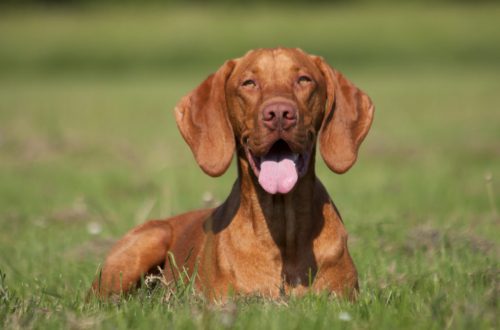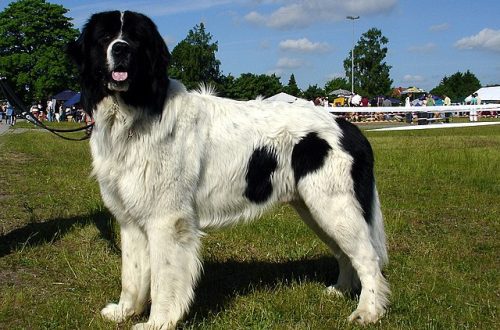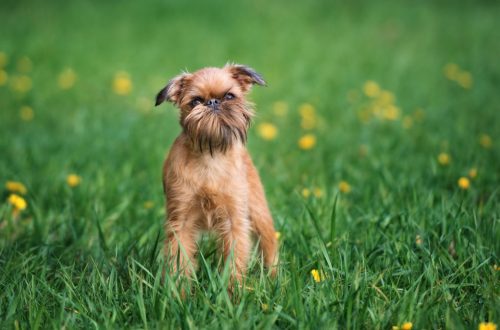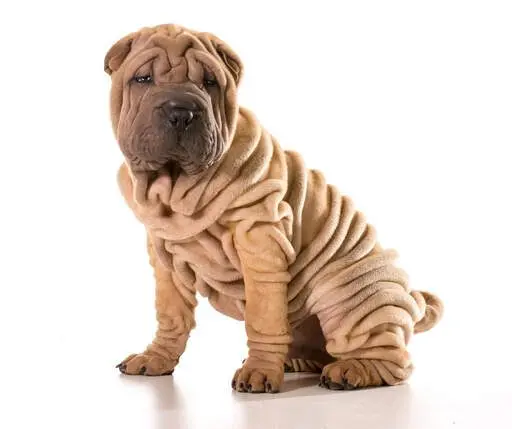
Shar Pei
The Shar Pei was once a versatile working dog that served as a watchdog, shepherd and flock protector, hunter, even a professional fighter. Today they are most often brought in not for protection, but as a companion. Shar Pei is a unique breed, whose appearance is so individual that it is rather difficult to confuse it with other dogs. A muzzle in deep skin folds, a thoughtful look and an independent character are all distinctive features of the Shar Pei.
Contents
- Characteristics of Shar Pei
- Basic moments
- History of the Shar Pei breed
- Video: Shar Pei
- Shar Pei’s appearance
- Photo of an adult sharpei
- Sharpei character
- Shar Pei Education and training
- Care and maintenance
- Shar Pei health and disease
- How to choose a Shar Pei puppy
- Photo of a Shar Pei puppy
- How much does a Shar Pei cost
Characteristics of Shar Pei
| Country of origin | China |
| The size | average |
| Growth | from 46 to 51 cm at the withers |
| Weight | from 18 to 23 kg |
| Age | up to 11 years |
| FCI breed group | Pinschers and Schnauzers, Molossians, Mountain Dogs and Swiss Cattle Dogs |
Basic moments
- The Shar Pei is originally from China and is believed to have common roots with the Tibetan Mastiff and Chow Chow.
- Genetics have established that the age of the breed can reach 3 thousand years.
- Shar Pei’s unusual wool is a strong allergen, so before buying, all family members should talk closely with the dog in order to identify a possible reaction of the body.
- Contrary to the “toy” appearance of puppies and adult animals, their character is not at all plush.
- Sharpei needs an experienced and strong owner who can maintain his authority in the eyes of the pet.
- The dog is not recommended for families with toddlers, but gets along well with older children and teenagers.
- Caring for an animal will not bring excessive trouble.
- Does not require constant physical activity.
- Preferably home content.
- Early socialization is necessary (possibly with the help of a specialist dog handler) to avoid aggression towards other animals and strangers.
- Unfortunately, Shar-Pei are not long-livers, the average life expectancy is 8-12 years.
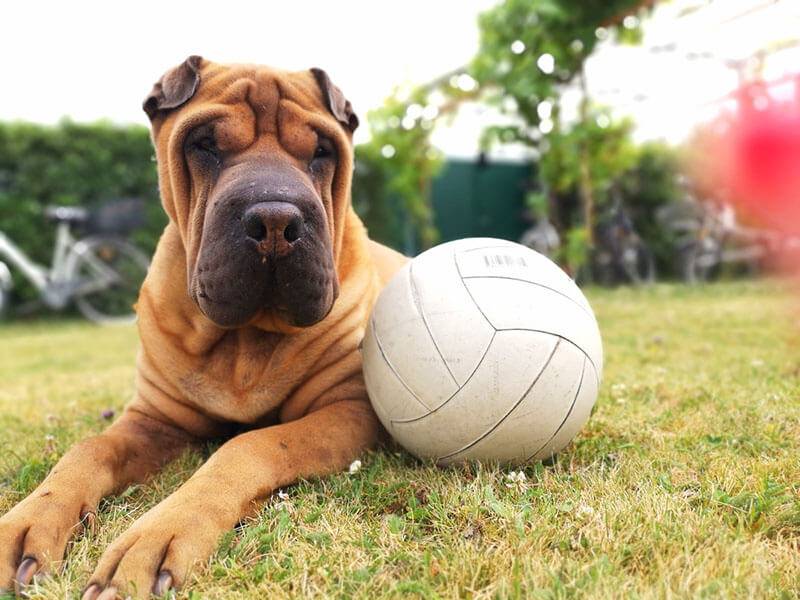
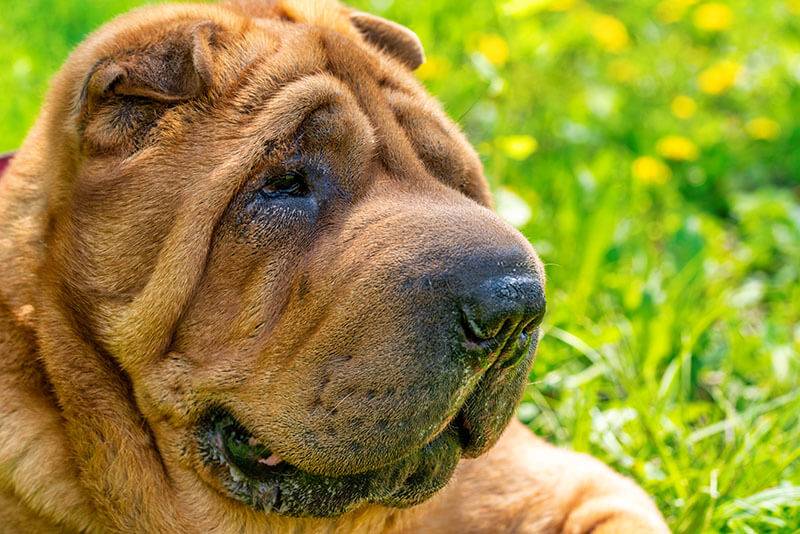
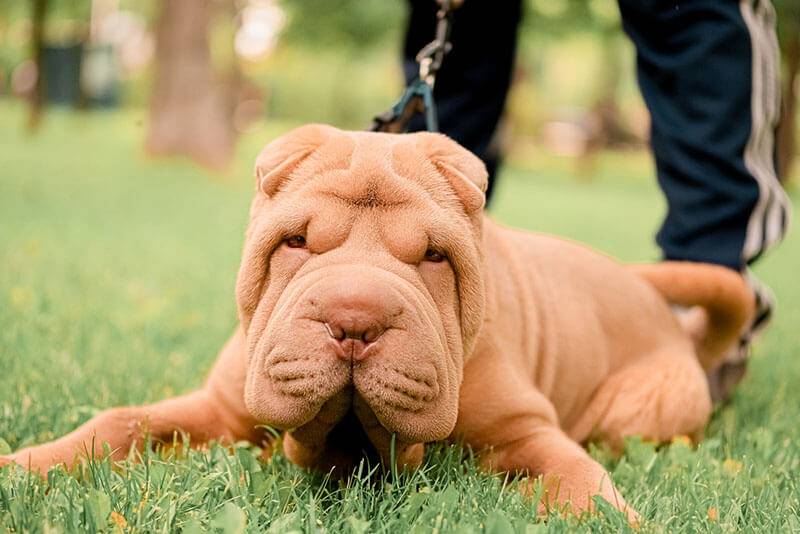
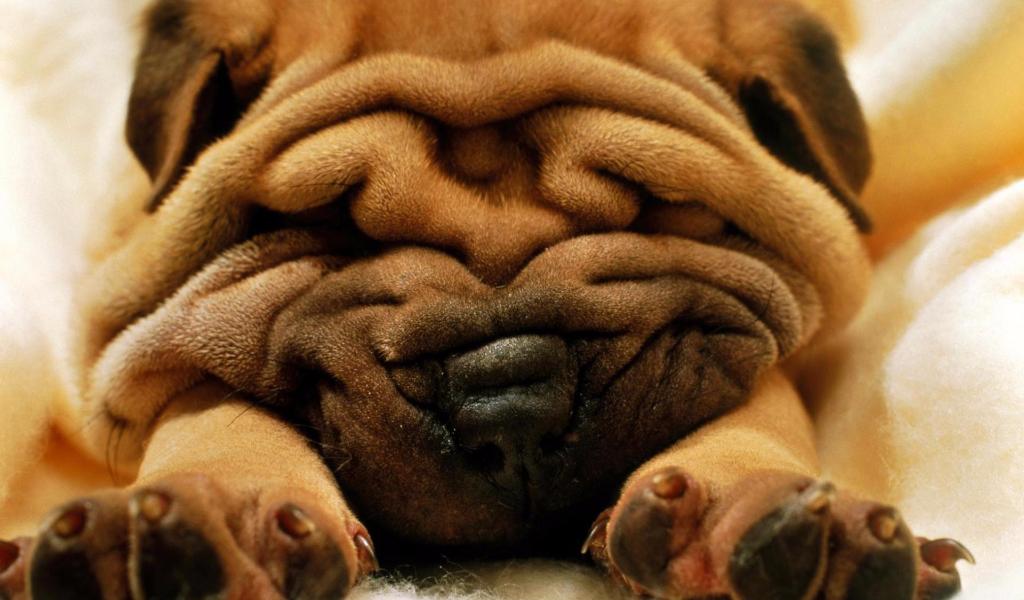
Shar Pei is one of those breeds that cannot be missed at any dog show or just a walking area. The unusual shape of the head and, of course, branded folds distinguish them from their relatives, and the blue-black tongue completes the picture – among hundreds of modern breeds, only Chow Chow can boast of this . But no less famous among breeders and their independent disposition.
History of the Shar Pei breed
Shar-Peis are sometimes also called “Han dogs”. But not at all because they belonged to the great Mongol khans – the eventful history of China is usually divided into eras, and one of the longest is the Han Empire (206 BC – 220 AD). It is during the reign of the Liu Dynasty that the earliest documentary evidence of the existence of this breed dates back. in the tombs of the 3rd century BC. e. archaeologists have found images of dogs with a square body, a twisted tail and a frown on the muzzle. It is believed that the clay figurines of Shar-Pei were designed to protect the deceased in the world of the dead.
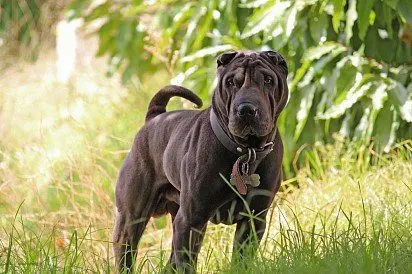
However, real representatives of the breed at the dawn of their existence were used mainly as participants in dog fights. There is reason to believe that then these animals were much larger, their weight reached 80 kilograms. Powerful jaws and prickly hair, unpleasant for capture, were also advantages in fights, and folds protected the most vulnerable places from significant damage: the muzzle and neck. They also became a good help when Shar-Peis began to be used for hunting large game ready to repulse a pack of wild boars, wolves, big cats.
Popularity has made the breed accessible not only to wealthy Chinese. Of course, during economic crises and famines, keeping dogs was an unaffordable luxury, but during periods of stability, peasants gladly used four-legged helpers to guard real estate and protect livestock from predators.
The first written mention of the Shar-Pei that has survived to this day dates back to the 13th century, but the following centuries were not favorable for them – the representatives of the Ming dynasty, with constant wars and tough demographic policies, forced their subjects to think not about breeding dogs, but about survival.
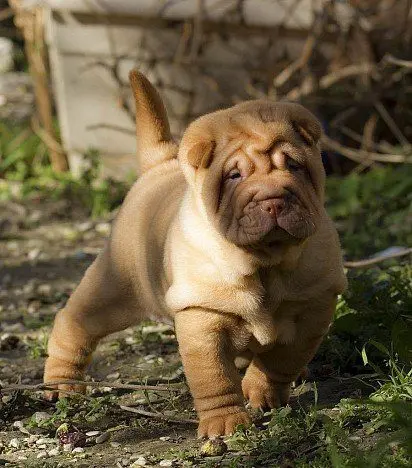
Interest in the breed again arises only in the XVIII-XIX centuries. But already in the 1940s, the coming to power of the Communists, led by Mao Zedong, put the Shar-Pei under the threat of complete extinction. From the point of view of the Communist Party, all domestic animals were a useless attribute of bourgeois life and were subject to extermination. Several individuals have been preserved on the island of Taiwan and in the oldest European colony in East Asia, Macau. In transit through Hong Kong, the first Shar-Pei arrived in the United States in 1966, where they were registered under the name “Chinese Fighting Dog” in 1971.
At the same time, an article appeared in the press about a rare breed, from which the campaign to save the Shar-Pei started. Enthusiasts were forced to work with limited material, cross with representatives of other, outwardly similar breeds and resort to inbreeding. Han dogs were allowed to participate in national exhibitions in 1973. The first breed standard was approved three years later, after which official pedigrees began to be issued.
In the 1980s and 1990s, Shar-Peis were recognized by many American and world cynological organizations: United Kennel Club, American Kennel Club, English Kennel Club, Federation Cynologique Internationale. In our latitudes, the first nurseries appeared after the collapse of the USSR.
Speaking about the latest news, it is worth noting the interest in Shar-Pei by scientists. Geneticists from the University of Washington in Seattle did serious work and in 2010 announced that the cause of the formation of folds characteristic of the breed is a mutation of the HAS2 gene, which is responsible for the production of an enzyme that is fundamentally important for the formation of skin cells. They speculate that the spontaneous DNA glitch that resulted in the unusually “folded” puppy was seen and reinforced by ancient Chinese breeders.
Another study conducted in 2004 shows that the Shar Pei, along with the Siberian Husky , Afghan Hound , Pekingese , belongs to the so-called first cluster of breeds, that is, their genotype is as similar as possible to the totality of wild wolf genes.
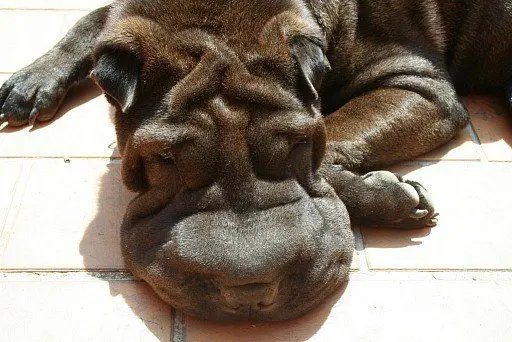
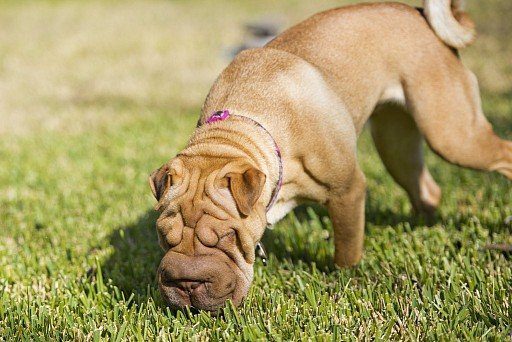
Video: Shar Pei
Shar Pei’s appearance
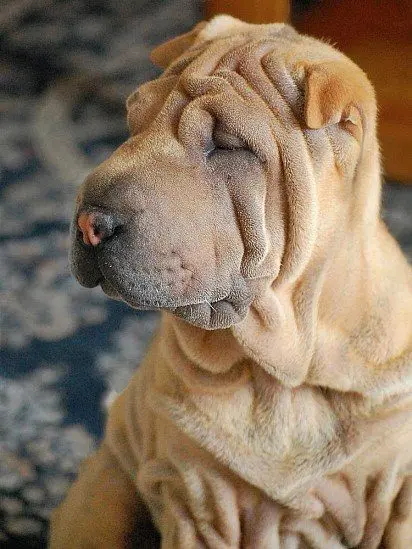

The Shar Pei is a compact, stocky, square dog. Males are taller and more muscular, about 50 cm tall at the withers and weigh 23-25 kg, while females average 45 cm and 20-22 kg.
Head
Broad and flat, with a moderate stop between the crown and a broad, strong muzzle that does not taper towards the nose. The folds of skin around the forehead and eyes give the dog a frown even when relaxed.
Shar Pei Ears
The Shar-Pei’s ears are very small in relation to the dog’s proportions, triangular in shape and fold forward.
Eyes
Medium in size, almond shaped and vary in color depending on the color of the Shar Pei’s coat.
Mouth
Large teeth, scissor bite. Jaws are powerful. The pigmentation of the gums, lips and tongue is pronounced: they should be blue-black, although in some individuals they have a lavender tint.
Neck and back
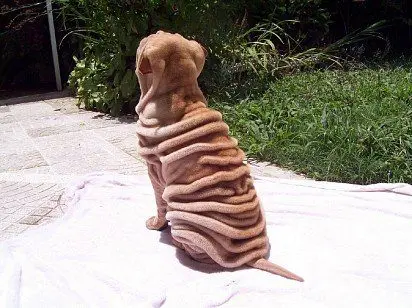

Muscular and lean; some excess skin around the neck is acceptable, although wrinkles should be absent from the ears to the shoulders, possible at the withers.
Frame
The ideal Shar-Pei should have the same length from the withers to the buttocks as the height from the ground to the withers, with the chest half as deep as this measure, giving pleasing proportion. Ribs well sprung.
Front and rear limbs
They exhibit a moderately angular form of the joints, giving a powerful, athletic appearance and clearly muscular. Skin folds are undesirable.
Tail
The Shar-Pei’s tail is thick at the base, where wrinkles are often visible again, and tapers to a thin tip. Can be twisted into a tight ring.
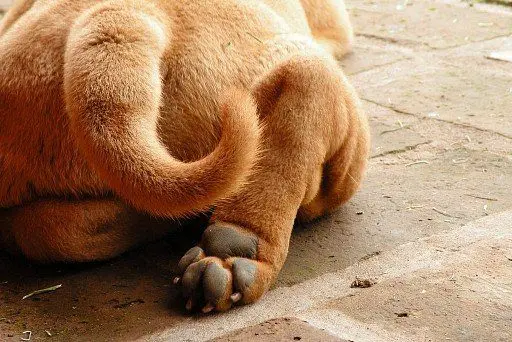

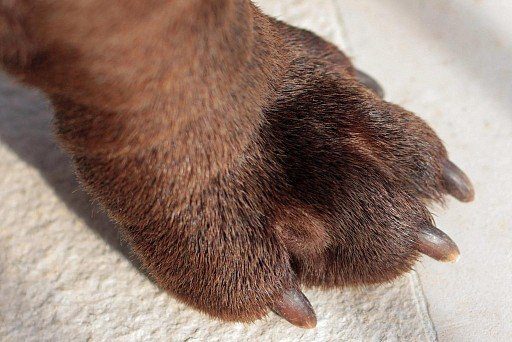

Shar Pei Wool
Consists only of guard hairs, no soft undercoat. Short and extremely coarse, it feels like stubble to the touch.
Color
Shar pei can be any solid color except white: “red deer” (red, classic), black, chocolate, apricot or cream diluted, blue, isabella, lavender and others. Spots are not allowed, but darker (along the spine and on the ears) and lighter (tail and back of the thighs) areas of the coat are possible.
Photo of an adult sharpei
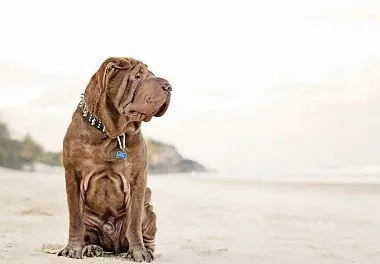

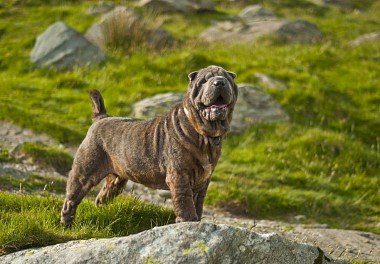

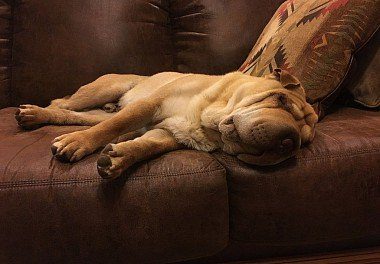

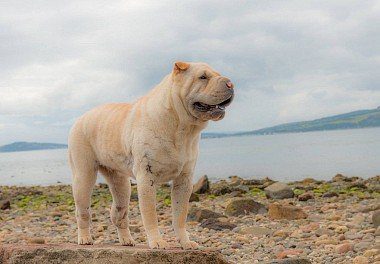

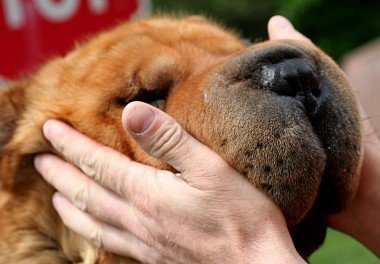

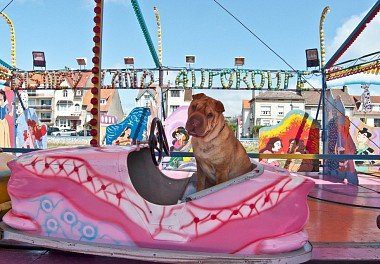

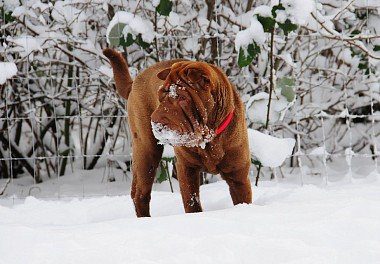

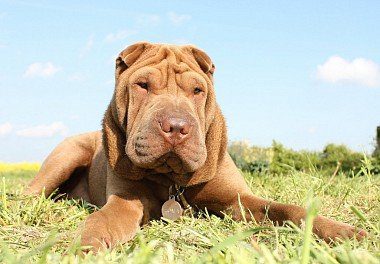

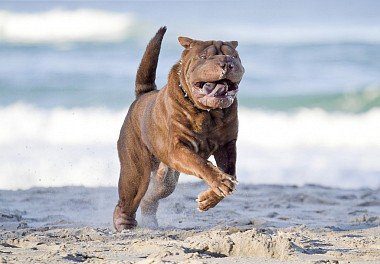

Sharpei character
Sharpei will definitely disappoint people who dream of a cheerful and playful pet. These are independent, closed and not particularly mobile “philosophers”. If the owner gives up slack in their upbringing, they will not hesitate to take advantage of the slip in order to take a dominant position in the “flock” and dictate their terms to the household. However, an experienced owner who will be able to assert his authority without the use of physical force and screaming, with the help of professional advice, will raise a well-mannered and obedient dog.


The protective functions assigned to the breed for many generations leave their mark on the character. To strangers and in general to everyone who is not part of a close social circle, Shar Pei will be wary and can openly demonstrate unfriendly intentions.
Han dogs have never been known as good-natured nannies who patiently endure the unintentional rudeness of small children. Leaving them alone with unintelligent crumbs is categorically not recommended. It is also worth remembering that due to physiological characteristics, the Shar Pei’s field of vision is very limited, he perceives sudden movements as a potential threat and reacts accordingly.
Shar-Pei usually does not get along well with other animals. He perceives dogs as opponents, and by virtue of instincts he treats other pets as prey. An exception may be cats if they grow up together.
However, do not rush to be disappointed in the breed and refuse to purchase a puppy! Properly trained and timely socialized Shar-Peis are excellent companions. They are calm, intelligent, noble, devoted to the family, not prone to fuss and loud barking.
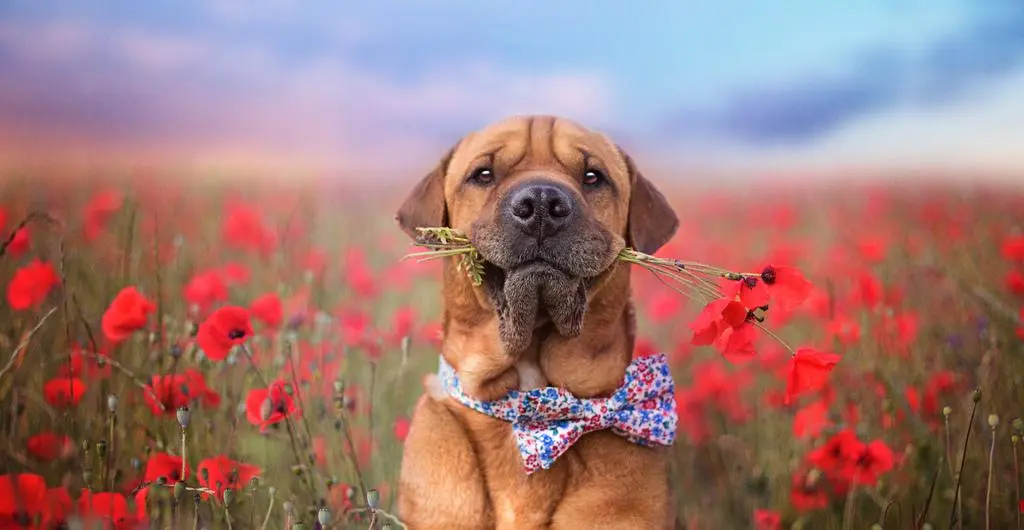

Shar Pei Education and training
These domestic “hippos” are independent and stubborn. In the process of training, patience and firmness will be urgently needed for you, since teaching commands actually becomes a clash of the will of the owner and the dog. If your pet does not respond to certain requirements, the problem is not at all a lack of mutual understanding – it does not occupy the intellect, but the desire to dominate a person leads to disobedience.
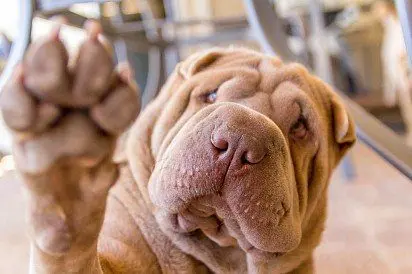

From the first days of the appearance of a puppy in a new family, it is important to demonstrate your authority without aggression, clearly delineating the boundaries of what is permitted. The main mistake at this stage may be to indulge the desires of a “cute baby”, so similar to a soft toy. It will be very, very difficult to restore discipline after you show weakness!
In addition to following standard commands, an obligatory part of teaching “good manners” should be the ability to behave in the presence of strangers and other pets. Any unmotivated manifestations of aggression are unacceptable here, although one cannot demand from a Shar Pei unusual delight at the sight of any guest. A restrained response would be ideal.
Care and maintenance
Due to their rather calm and quiet nature, Shar-Peis are well suited for apartment maintenance. Moreover, it is preferred because short hair does not protect against low temperatures, and overheating is bad for the health of the animal due to the structure of the skin and respiratory tract.
These dogs do not require expensive professional grooming, frequent bathing. Note, however, that during bath procedures (once every 2-3 months, if nothing extraordinary happens), it is imperative to use special shampoos that do not cause irritation, and thorough drying with a hairdryer. In short-haired individuals, even seasonal molting passes almost imperceptibly, it is enough to iron them once a week with a mitten purchased in a pet supply store to comb out wool, and pets with “bear fur” need more thorough care using rubber brushes twice a year.
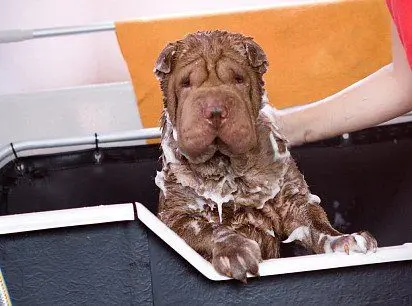

What needs to be done regularly and diligently is to take care of the skin. Sweat and fat secretions, dirt, food particles accumulate in its folds, which can lead to dermatitis. Attention should also be paid to the ears in order to avoid inflammation in the shells and the auditory canal.
An hour of walking a day is enough for Shar-Peis to maintain normal physical shape. The structure of the skull makes them similar to brachycephalic dogs (bulldogs, boxers, pugs), so intense activities like jogging and overcoming obstacle courses are contraindicated due to breathing problems.
Feeding recommendations do not differ from the standard for all thoroughbred animals. Premium or super premium quality prepared food, or a well-formulated diet based on regular foods that will balance nutrients. The portion size is individual and depends on the age, size and physical activity of each animal. Be sure to provide round-the-clock access to fresh drinking water.
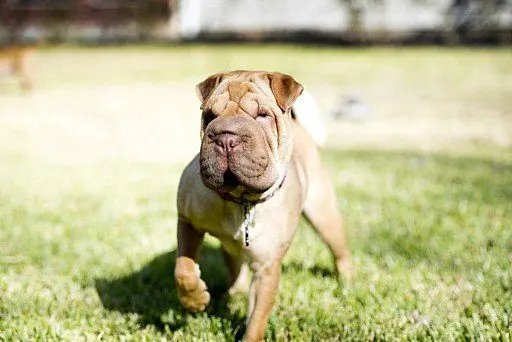

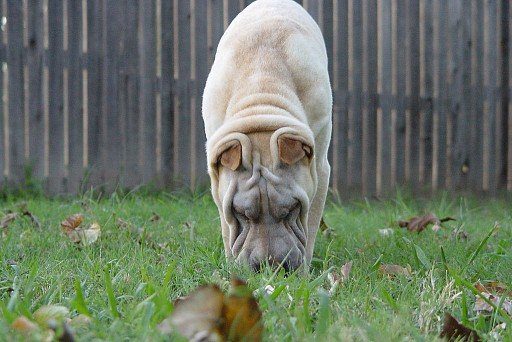

SKIN AND COAT CARE
Care and maintenance of sharpei has its own characteristics. The coarse coat of these dogs does not require grooming, but skin care in the deep folds is necessary. They must be wiped with special lotions and dried dry with a napkin. Such hygiene procedures can be carried out once a week. Skin in deep folds is prone to excessive moisture and dermatitis.
Shar Pei often do not need to be bathed: once every 3-6 months is enough. Due to the lack of pranks and pampering, these dogs rarely get dirty, and the fatty layer on the skin protects it from damage.
Shar pei skin that is too dry after bathing can cause dandruff and itching. Shampoo is better to choose specifically for dogs and hypoallergenic. After bathing, be sure to wipe dry all the folds of the pet.
EAR CARE
Shar-Pei’s ears should be checked once a week. If the dog does not scratch his ears, there are no traces of secretions and an unpleasant odor in them, then they are healthy. If there is a discharge, the dog tilts its head to one side, scratches its ears and whines, then this is a reason to see a doctor.
Special care for Shar Pei’s eyes is not required, but if abundant discharge appears from the eyes, the dog squints his eyes or one eye, cannot open them after sleep, you should definitely go to a veterinary ophthalmologist for a consultation. Sometimes Shar Pei require plastic surgery on the eyelids due to the specific skin of dogs of this breed.
DENTAL CARE
Sharpei teeth also need care. If tartar builds up on them, they must be cleaned regularly to prevent tartar build-up.
NAIL CARE
Once every 2-3 weeks Shar-Pei needs to trim its claws. The nails can grow too long and interfere with the correct set of limbs if the dog walks a little on the pavement and does not wear them down naturally. It is necessary to accustom to trimming the claws from puppyhood, otherwise the capricious and independent nature of the sharpei will force you to go to the veterinary clinic for this procedure.
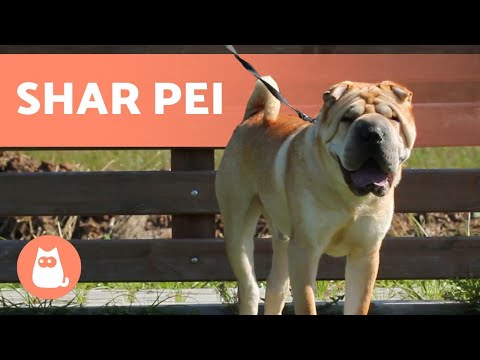

Watch this video on YouTube
FEEDING AN ADULT SHAR PEI
Light-colored dogs may be prone to food allergies, so the diet should be complete and stable. An adult Shar Pei should be fed 1-2 times a day, drinking water should be available all the time.
Table. Amount of feed per day (divided by the number of meals)
| Adult dog weight | Activity less than 1 hour per day | Activity 1-3 hours a day |
| 18-20 kg | 225-275 g dry food | 260-300 g dry food |
| 20-25 kg | 275-320 g dry food | 300-350 g dry food |
Shar Pei health and disease
Cynologists classify Shar-Pei as a breed with poor health. The number of possible hereditary and lifelong acquired diseases is such that some organizations even raise the question of the advisability of further breeding. The reason for this is largely the unscrupulousness of breeders who, in the wake of the boom in popularity of Han dogs in the 80s and 90s of the last century, pursued commercial gain at the expense of animal welfare.
Today, breeders, in close cooperation with veterinarians, are trying to cut off genetically undesirable pedigree lines, however, even in good kennels, puppies with certain diseases are born.
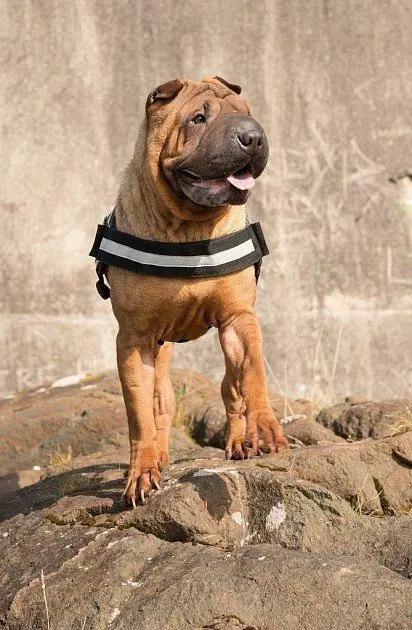

- Sharpei fever (also known as swollen hock syndrome) manifests itself in swelling of the hock joint or even two against the background of an inexplicable temperature increase to 39-42 ° C, accompanied by abdominal pain, vomiting, diarrhea. It is presumed to be hereditary, usually occurs at 18 months of age, and may bother the dog later on. There is no effective treatment, during attacks they struggle with symptoms, reducing temperature and pain with medication.
- Hypothyroidism is a lack of thyroid hormones, which provokes the development of epilepsy, alopecia (hair loss), obesity, hyperpigmentation, pyoderma (purulent inflammation of the skin) and other dermatological problems, and in especially severe cases, lethargy. Treated with medication and diet.
- Elbow or hip dysplasia is a degenerative disease that results in a growing animal with a weak joint that can lead to arthritis and lameness.
- Demodicosis – the appearance of areas of reddened, flaky skin, hair loss caused by infection with skin parasites. The tick can be transmitted from mother to puppies in the first days of life and not manifest itself until the period of reduced immunity. Humans and other animals cannot become infected through contact with a dog.
- Pyoderma is a bacterial infection that causes accumulations of pus in the outer layers of the skin and near the hair follicles.
- Seborrhea – dermatitis in the form of peeling of keratinized skin, is most often the result of allergic, infectious and parasitic diseases, problems with the immune system, endocrine system or metabolism.
- Cutaneous mucinosis – excessive production of mucin by epithelial cells leads to the formation of mucus-filled blisters, is mainly considered a cosmetic problem, but sometimes the oropharynx is affected, causing breathing problems. Treated with corticosteroids.
- Dislocation of the patella (patella) – congenital or acquired displacement of the patella relative to the normal position, is episodic or permanent. In severe cases, it is almost impossible to set it into the block of the femur, and the animal loses the ability to lean on the diseased limb.
- Osteochondrosis – abnormal growth of cartilage in the bag, causes painful stiffness of the joint.
- Gastric volvulus is a dangerous condition that is associated with distension of the stomach by air trapped as a result of too fast absorption of a large amount of food. It leads to a violation of the normal blood flow, a sharp decrease in pressure. Immediate veterinary help required! Alarming symptoms are restless behavior, bloating, excessive salivation, and ineffectual retching.
- Glaucoma – increased intraocular pressure, leading to atrophy of the optic nerve and loss of vision.
- Entropion is an incorrect position of the eyelids, in which the free edge of the lower (more rarely, the upper eyelid) wraps up to the eyeball and constantly injures its surface, causing inflammation of the cornea and loss of vision.
How to choose a Shar Pei puppy
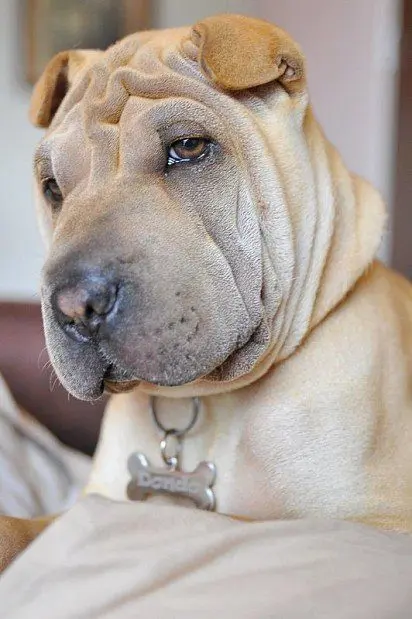

It is worth noting: newborn Shar-Peis do not have folds at all, but by the 6th week of life they accumulate so many that they become like Bibendum’s rubber man, a recognizable symbol of one of the car tire manufacturers. As the dogs grow older, as it were, they “grow” to too large a skin, only the head and scruff remain covered with large wrinkles. To understand how much folding will be expressed in the future pet and what type of coat, you need to look at his parents.
The health of the baby largely depends on them, so do not hesitate to ask the breeder for medical documents. The puppy itself in the veterinary passport at the time of purchase should have marks on the appropriate age-appropriate vaccination.
An important indicator is the conditions of the mother and puppies. A dark, cramped, not protected from the wind, and even more so a dirty aviary does not testify in favor of the breeder. Complete nutrition in the womb and in the first months of life lays the foundation for life, be sure to pay attention to the contents of the bowls!
If the Shar-Peis of the selected cattery do not participate in exhibitions at all, this is an alarming bell – they have problems either with health and physical indicators, or with behavior. It is better to refuse to purchase a pet in such a place.
The main thing is that the puppy easily makes contact, is not afraid of a person and does not show aggression, and is not suspiciously apathetic.
Photo of a Shar Pei puppy
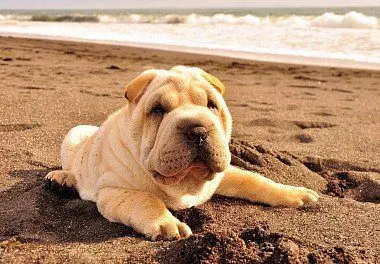

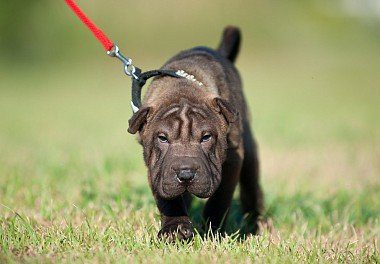

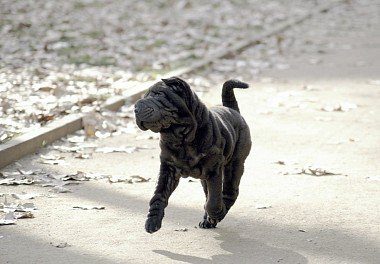

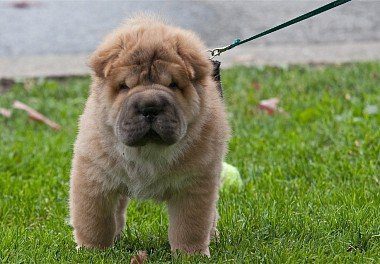

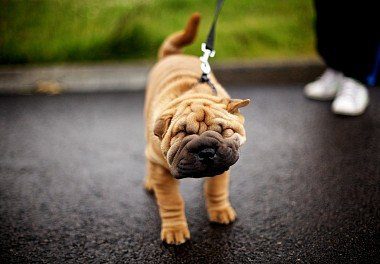

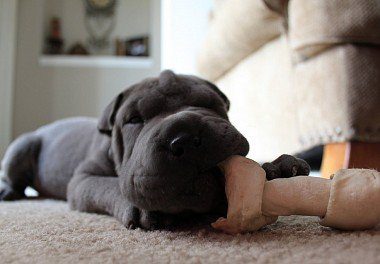

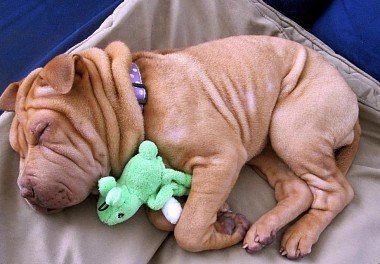

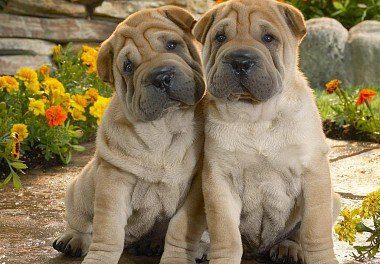

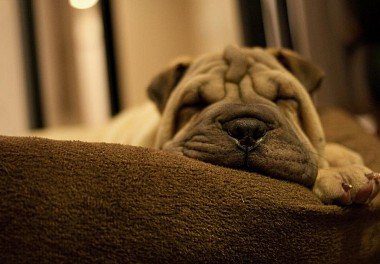

How much does a Shar Pei cost
The lowest price of Shar-Peis is traditionally offered in bird markets and Internet sites with free ads. Naturally, in this case, you have no guarantees of the purity of the breed, the health of the dog and the stability of its psyche.
Pet-class puppies, that is, pets with purebred parents who do not quite meet the breed standard due to minor appearance flaws and do not receive a formalized pedigree, cost from 200$ rubles and more.
For Shar Peis of the breed class, which have all the characteristics of the breed and may be of interest for further breeding, new owners will have to pay at least 400 – 600$.
The most expensive are show-class dogs, they not only fully meet the standard, but also have a character suitable for exhibitions, a special ability to present themselves. The champion’s potential cannot be ascertained at an early age, therefore, if you hear categorical statements about such prospects in relation to an 8-10 week old baby, do not doubt the seller’s dishonesty. A real breeder knows that you can only ask for 900 – 1100$ for a teenager (8-9 months old) who already has experience participating in junior exhibitions.





